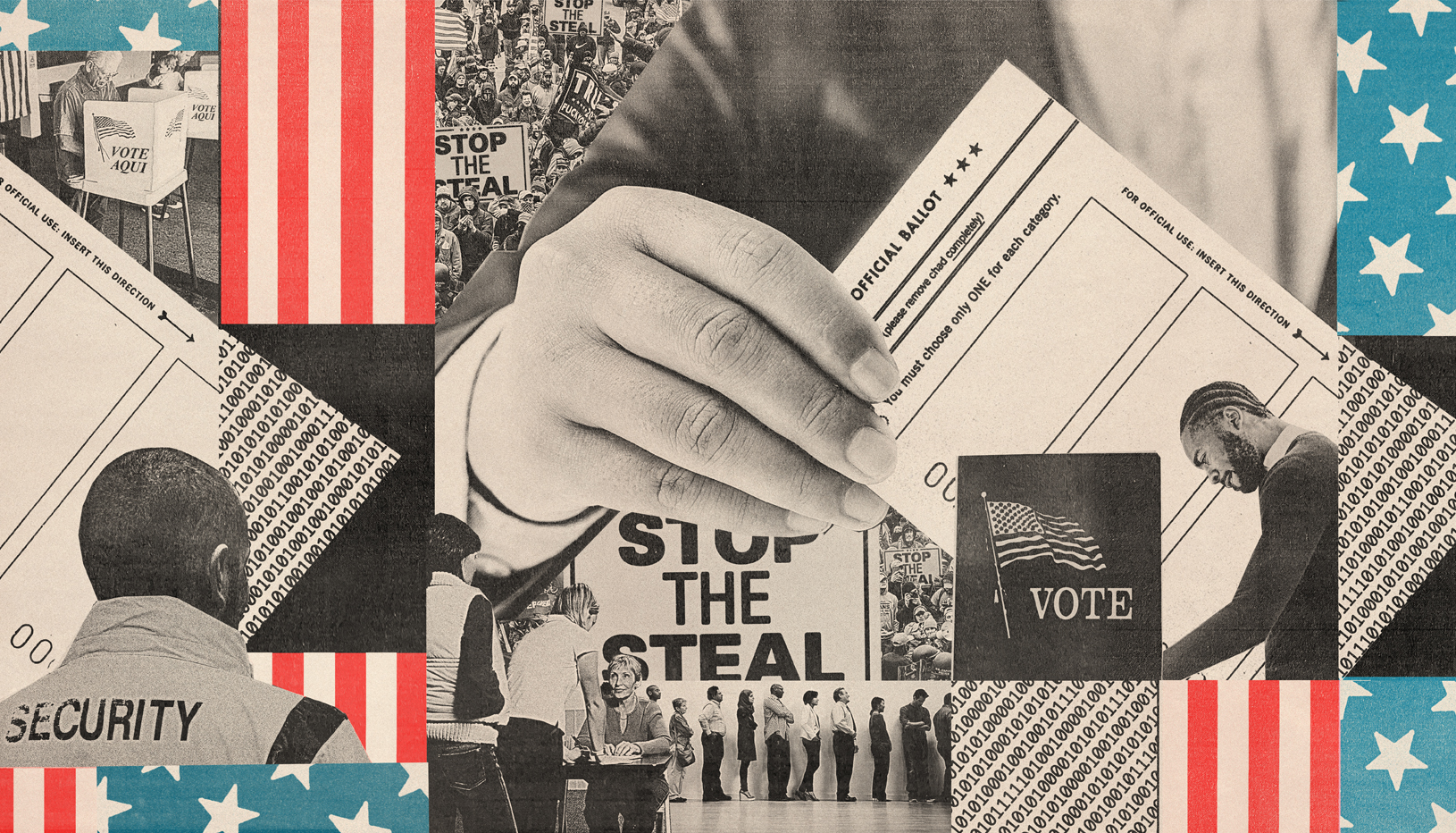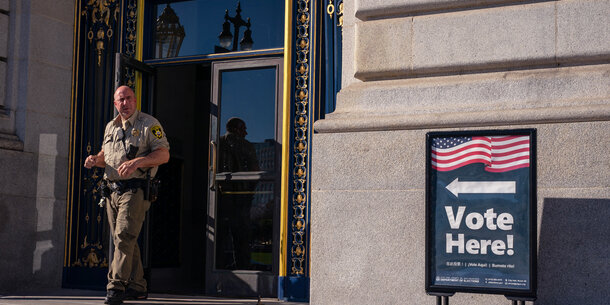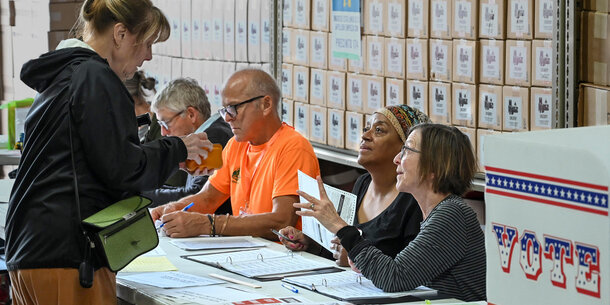In the 2020 presidential race and 2022 midterms, lies about our elections were amplified by President Trump and powerful politicians to encourage disruption of the electoral process and contribute to plunging levels of trust in democracy.
Distrust in elections, as a new Brennan Center report makes clear, has in turn fueled other threats, including cyberattacks, harassment of election workers, and insider attacks in which the very people tasked with administering elections undermine the security of voting systems. Combating election misinformation is a tall order, but there are steps policymakers can take now to protect the vote in 2024.
The dangers of election falsehoods are compounded for Latino voters. Misinformation proliferated across Spanish-speaking media in 2022 and continues to spread ahead of 2024. Adding to that, newly registered voters, who are most likely to be Latino, often lack familiarity with U.S. voting procedures, making them particularly susceptible to misinformation.
Lies about how, when, and where to vote intended to trick people out of voting overwhelmingly target Black and Latino individuals, who are also disproportionately affected by restrictive voting laws. Making matters worse, a slew of legislation last year, spurred by false claims of voter fraud, aimed specifically to disenfranchise Latino voters.
Some of the measures to safeguard elections are straightforward: For example, local election offices should adopt .gov domains for election websites to help users differentiate more easily between real and fake websites. Registration for .gov domains is free for election offices, and federal funding already exists for costs associated with transitioning to such domains. Yet only one in four election office websites currently uses a .gov domain.
The Department of Homeland Security’s Cybersecurity and Infrastructure Security Agency (CISA), which administers .gov domains, supplies multilingual media resources to help election officials prepare for and respond to disinformation. The agency should encourage and assist local election offices to transition their websites to .gov domains.
CISA should also expand its output of multilingual resources and work with community-based organizations — such as those in Latino and immigrant communities — to build resilience to disinformation campaigns and disseminate accurate election information to voters.
In addition, states need to allow early processing and counting of mail ballots to cut down on delays. In 2020, election deniers exploited the period of uncertainty before results were released to suggest that mail ballots were fraudulent and to falsely claim the election was stolen.
States can avoid inadvertently fueling such conspiracy theories by preprocessing mail ballots before Election Day. Yet several states do not allow preprocessing, including the battlegrounds of Pennsylvania and Wisconsin. State legislators need to allow and encourage election officials to preprocess ballots ahead of Election Day, and states that already allow preprocessing should increase the time permitted for doing so.
Election denialism has also fueled a flood of election worker exits. Election worker turnover can result in more innocuous administrative mistakes, which in turn add fuel to conspiracy theory fires. Policymakers need to assure election workers that they are being protected.
The good news is that many state laws already on the books could cover most violent threats. Yet too often, these laws are not enforced. Federal, state, and local law enforcement must improve systems for reporting and investigating improper conduct to demonstrate to election officials that it takes these threats seriously.
Since 2020, there have also been at least 17 reported incidents of election deniers gaining or attempting to gain unauthorized access to voting systems, often with the help of election officials. A county clerk in Colorado, for example, gave unauthorized individuals access to the county’s voting system and turned off video surveillance of the voting machines to cover it up.
Following the breach, Colorado enacted a law requiring election offices to adopt a keycard access system for storing voting equipment, monitored by constant video surveillance. It also established a $1 million fund to assist counties in complying with the new security requirements. Other states need to follow suit by setting access restrictions and establishing clear authority to remediate any potential security risks.
The window for securing the 2024 election is quickly closing. Fortunately, the government already has a success story to model a coordinated response to election vulnerabilities: after the 2016 Russian cyberattacks on election infrastructure, the Department of Homeland Security designated election systems as critical infrastructure, and officials from all levels of government worked together to reinforce them against online threats.
Those efforts resulted in increased funding for election cybersecurity, as well as greatly improved trust and information sharing between federal agencies and state and local election officials. As a result of these combined efforts, CISA and other election security leaders called the 2020 election the “most secure in American history.”
Less than four years later, the United States risks losing ground. Voters roundly rejected election deniers running for office last year, but we’re not out of the woods yet. These evolved threats need to be met with the same massive, coordinated response. As the Brennan Center’s report illustrates, we have a road map for confronting these challenges and the tools to meet them.






